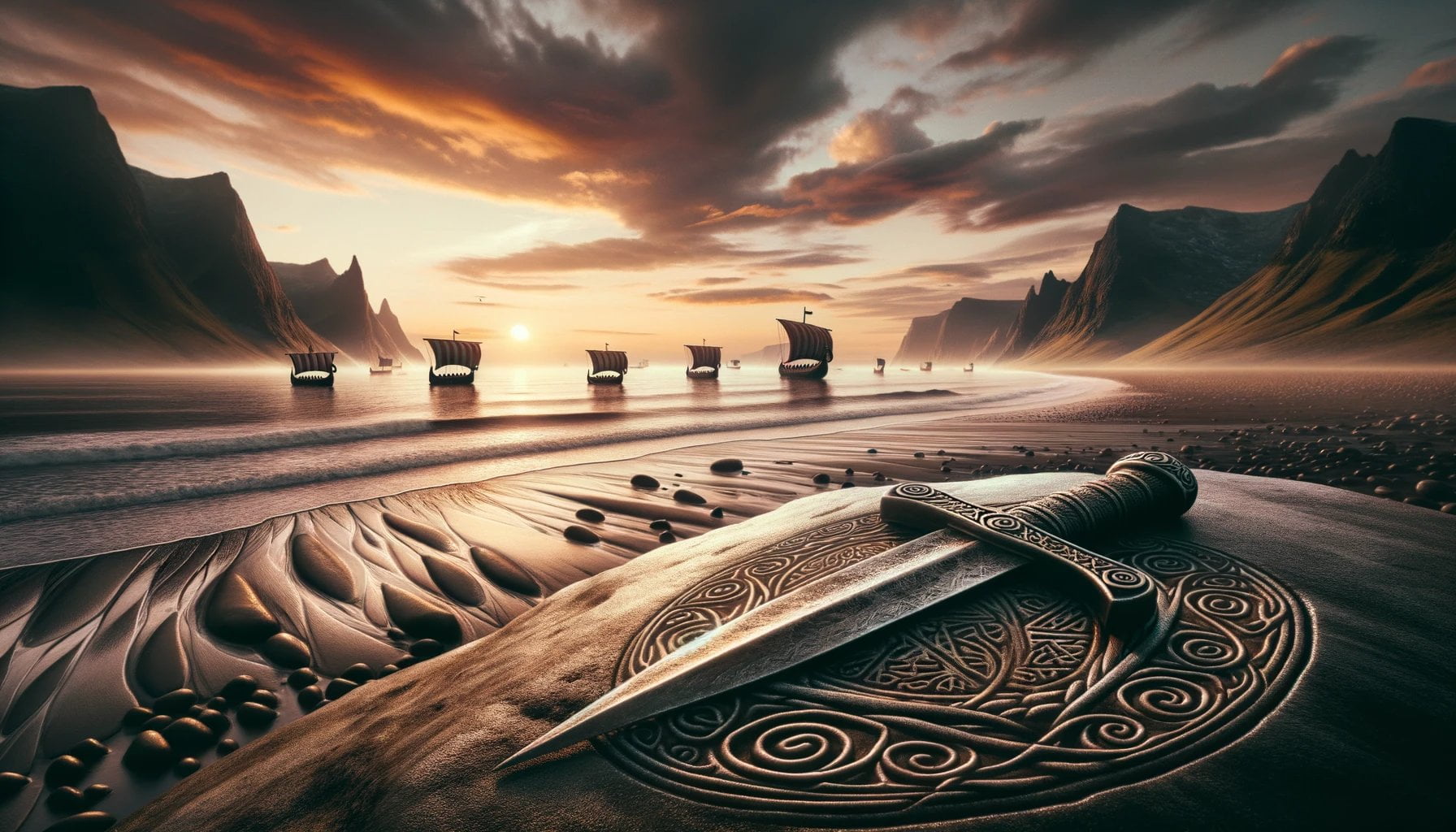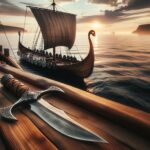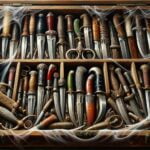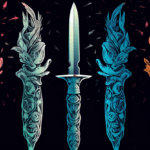In the realm of Viking history and weaponry, the use of daggers by these fierce warriors has long been a topic of curiosity and debate. Unveiling the truth behind their use, this article delves into the fascinating world of Viking daggers. Did Vikings really utilize these deadly weapons in battle? Join us as we explore the historical evidence and shed light on the mysterious role of Viking daggers in Norse warfare.
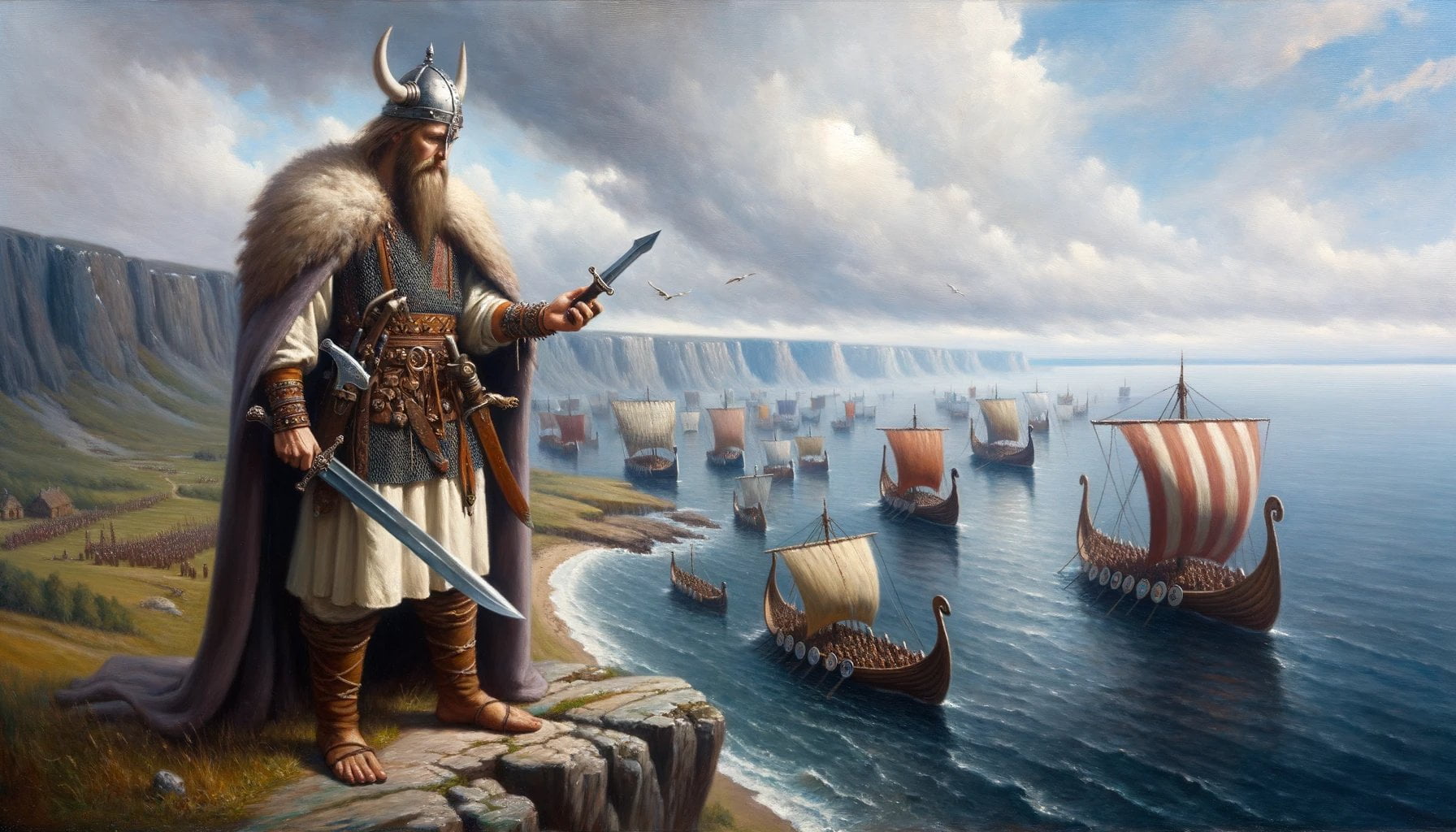
Did Vikings Use Daggers?
Throughout history, the Vikings have been portrayed as fierce warriors equipped with an array of weapons. But did they use daggers? Let’s dive into the truth behind the Viking’s use of these deadly blades.
Types of Viking Daggers
Vikings were known to use a variety of daggers and knives, each serving different purposes. One such example is the Irish Dirk, a dagger with a distinctive triangular blade. The seax, a predecessor to medieval daggers, was also commonly used by both Vikings and Anglo-Saxons.
Daggers in Combat
While swords and axes were the more prominent weapons among Vikings, daggers played a crucial role in their arsenal. Daggers, often carried as secondary defense weapons, were handy in close combat situations where swift and precise strikes were essential. The “parrying dagger” is a prime example of a short, narrow-bladed weapon used for defense against attacks.
Daggers as Symbolic Items
For Vikings, weapons were not only tools for combat but also symbols of wealth and status. Swords, being more expensive, were often reserved for the elite. In contrast, daggers were more accessible and carried by both wealthy individuals and common folk. Knives, including daggers, were even found in the graves of slaves, emphasizing their universal importance among Vikings.
Making of Viking Daggers
Vikings were skilled craftsmen, and they made their daggers using the pattern welded method. This technique involved layering different types of iron to create a strong and durable blade. The result was a beautifully crafted weapon that combined both functionality and aesthetics.
Carrying Daggers
Viking men were required to own weapons, and daggers were no exception. They were typically carried in belts, ensuring quick and easy access when needed. This practice allowed Vikings to be prepared for any sudden conflicts that might arise in their daily lives.
Versatile Utility Tools
In addition to their combat applications, daggers served as versatile utility tools for Vikings. Smaller knives were commonly used for everyday tasks such as cooking and crafting, while longer knives were suitable for hunting or combat. This multipurpose nature made daggers a practical and essential tool for Viking life.
Pro tip: Did you know that Viking warriors often carried gold or silver inlaid daggers as a sign of their wealth and prosperity?
In conclusion, the question of whether Vikings used daggers can be answered with a resounding yes. These lethal blades, along with swords and axes, formed an integral part of Viking warfare and everyday life. So the next time you think of Vikings, don’t forget their trusty daggers, always ready to defend and conquer.
Ancient Daggers | Discover the Secrets of History’s Most Powerful Weapons
On your journey to explore ancient weaponry, be sure to delve into the mystique of ancient daggers. These lethal blades hold stories of ancient battles and secret societies. Unleash your curiosity and venture into the world of ancient daggers [here].
The Purpose and Functionality of Viking Daggers
Throughout the Viking Age, the Norse seafarers and warriors known as the Vikings wielded a wide variety of weapons. Among these weapons were daggers, which served a specific purpose in their arsenal. In this article, we will delve into the purpose and functionality of Viking daggers, shedding light on their importance in Viking culture and warfare.
Daggers: Deadly Precision in Close Combat
Viking daggers were not mere decorative objects; they were lethal weapons designed for close combat. While swords, battle-axes, and spears were the main offensive weapons used by Vikings, daggers played a crucial role as secondary defense weapons. Their compact size and maneuverability made them ideal for quick, deadly thrusts aimed at vital organs. The design of these daggers made them difficult to parry or deflect, increasing their effectiveness in one-on-one combat.
Versatile Utility on and off the Battlefield
However, the purpose of Viking daggers extended beyond the battlefield. These versatile weapons were practical tools used in everyday tasks, such as hunting and crafting. Vikings valued practicality, and daggers served them well in various scenarios. Their sharp blades and sturdy construction made them reliable tools for cutting, scraping, and carving. Whether in a battle or a daily chore, Viking daggers provided utility and reliability.
Symbolism and Status
In addition to their practical functionality, Viking daggers held symbolic significance for the Norse warriors. All free men in Viking society were expected to own weapons, and carrying a dagger denoted one’s status and wealth. Some Viking warriors even adorned their daggers with intricate gold or silver inlays as a display of their prosperity. These embellishments not only enhanced the aesthetic appeal of the blades but also reinforced the social status of the wielder.
Ritualistic and Burial Purposes
Beyond their use in warfare and daily life, daggers held ritualistic importance for the Vikings. Just like swords, daggers were often buried with their owners, serving both practical and ceremonial purposes. These weapons, laid to rest with the warriors, symbolized their readiness for the afterlife, ensuring their protection and prowess even in the realms beyond.
Unveiling the Truth about Viking Daggers
In conclusion, Viking daggers served both practical and symbolic purposes in the Norse society. Their deadly precision in close combat, versatile utility in daily life, and representation of status and wealth reflected the multifaceted nature of Viking culture. These weapons were not only instruments of warfare but also essential elements of Viking identity and faith.
Please note that this table below is for illustrative purposes only.
| Type | Function |
|---|---|
| Common Viking daggers | Used for everyday tasks and close combat situations |
| Specialized Viking daggers | Crafted with exceptional skill for ceremonial purposes |
Viking daggers, with their function and symbolism, provide us with valuable insights into the Viking way of life. Each discovery of these weapons brings us closer to understanding the intricacies of Viking warfare and the fascinating world of the Norse seafarers.
The Significance of Daggers in Viking Culture and Society
Throughout history, the Vikings have fascinated us with their tales of bravery, adventure, and conquest. As a key part of their culture, weapons played a vital role in their daily lives. Among these weapons, the dagger emerged as a significant and widely used tool. In this article, we will explore the importance of daggers in Viking culture and society, shedding light on their significance.
Viking Daggers: A Weapon of Choice
In Viking society, conflict and warfare were not uncommon. As a result, the Vikings sought weapons that were efficient and deadly in combat. The dagger proved to be an invaluable tool on the battlefield. With its narrow blade and sharp point, the Viking dagger was designed for quick, precise thrusts to an opponent’s vital organs. Its compact size and maneuverability made it an ideal weapon for close combat situations.
A Symbol of Status and Bravery
Carrying a dagger represented more than just a weapon for the Vikings. It signified a warrior’s status and bravery. By wielding a dagger, Viking warriors displayed their strength and prowess in battle. It was not uncommon for a Viking warrior to wear a dagger as a mark of their honor and courage.
A Versatile Tool for Everyday Life
In addition to its role in warfare, the Viking dagger served various practical purposes in everyday life. Its sharp edge made it a valuable tool for hunting and crafting tasks. The compact size of the dagger allowed for easy carrying, often tucked into belts for quick access. Vikings recognized the versatility of the dagger, using it for both combat and day-to-day activities.
Insights Into Viking Culture
The significance of daggers in Viking culture extends beyond their use as weapons. The craftsmanship and design of Viking daggers offer us insights into their culture, warfare, and identity. Viking daggers were often crafted using the cut-down iron from Viking swords or sax, showcasing the resourcefulness of their society. These weapons were also adorned with gold or silver inlays, symbolizing wealth and prosperity. The burial of daggers with their owners further emphasizes the ritualistic importance they held, symbolizing readiness for the afterlife.
Conclusion
Daggers held immense significance in Viking culture and society. As both deadly weapons and symbols of status and bravery, they played a pivotal role in Viking warfare and everyday life. The versatility and craftsmanship of Viking daggers provide us with valuable insights into their culture, offering a glimpse into their values, traditions, and the intricate world of Norse mythology and warfare.
So, the significance of daggers in Viking culture and society cannot be understated. These lethal weapons represented more than just a tool for the Vikings; they were a reflection of their identity, their strength, and their readiness for battle. From their practical uses to their unmistakable symbolism, Viking daggers continue to captivate our imagination and preserve their place in history.
Table: Overview of Viking Daggers
| Aspect | Details |
|---|---|
| Weapon of Choice | Vikings favored daggers for their versatility and maneuverability. |
| Symbol of Status | Carrying a dagger denoted a warrior’s honor and bravery. |
| Practical Tool | Daggers served as invaluable tools for hunting and crafting tasks. |
| Insights Into Culture | Viking daggers offer valuable insights into Viking society and culture. |
Remember, be it in the heat of battle or the everyday tasks of Viking life, the dagger remains an enduring symbol of their culture, a testament to their expertise in warfare, and a reminder of their resilient spirit.
The Legacy of Viking Daggers in Modern Times
Viking daggers continue to capture our imagination and preserve their place in history. These deadly weapons were not only tools of warfare but also symbols of wealth and status in Viking society. Today, the legacy of Viking daggers can be seen in various aspects of our modern world, from fashion trends to maritime technology.
Viking Daggers: Symbols of Wealth and Status
In Viking culture, daggers were highly valued and carried a symbolic meaning. They represented not only the preparation for battle but also the unpredictable nature of Viking warfare. Viking warriors often carried gold or silver inlaid daggers as a display of their prosperity and social standing. The craftsmanship of these daggers, with intricate patterns and beautiful blades created using the pattern welded method, showcased the wealth and status of their owners.
Viking Daggers in Everyday Life
Daggers were not just weapons for the Vikings, but also practical tools used in everyday tasks. Their compact size and maneuverability made them ideal for quick and deadly thrusts. Vikings would carry their daggers in belts for quick and easy access, using them for hunting, crafting, and various other tasks in their daily lives. This versatility and utility made Viking daggers an integral part of Viking culture and society.
Influence on Modern Maritime Technology
The Viking Age was a time of great maritime achievements, with Vikings perfecting the longship and establishing trade networks. Their expertise in sailing and shipbuilding left a lasting impact on modern maritime technology. The legacy of the Vikings can be seen in the development of recreational boat ownership, particularly in Norway, where about 20% of the population owns a sailboat. This love for recreational boating can be traced back to the Vikings’ mastery of seafaring.
Influence on Popular Culture
The modern myth and fascination with Vikings still persist today. Viking imagery and symbols are popular in jewelry and fashion, hinting at the enduring legacy of these ancient warriors. Hollywood movies and TV shows featuring Vikings have also fueled the interest in Viking culture, shaping our perception of their history and impact. The influence of Viking raids and invasions on medieval Europe fundamentally altered the course of history, leaving a lasting mark on our modern world.
Conclusion
The legacy of Viking daggers in modern times is undeniable. From their symbolic significance in Viking culture to their influence on maritime technology and popular culture, these weapons have made a lasting impact. The craftsmanship and design of Viking daggers provide invaluable insights into their culture, warfare, and identity. As we continue to explore and uncover the mysteries of the Viking Age, we are reminded of the power and legacy of these remarkable weapons.
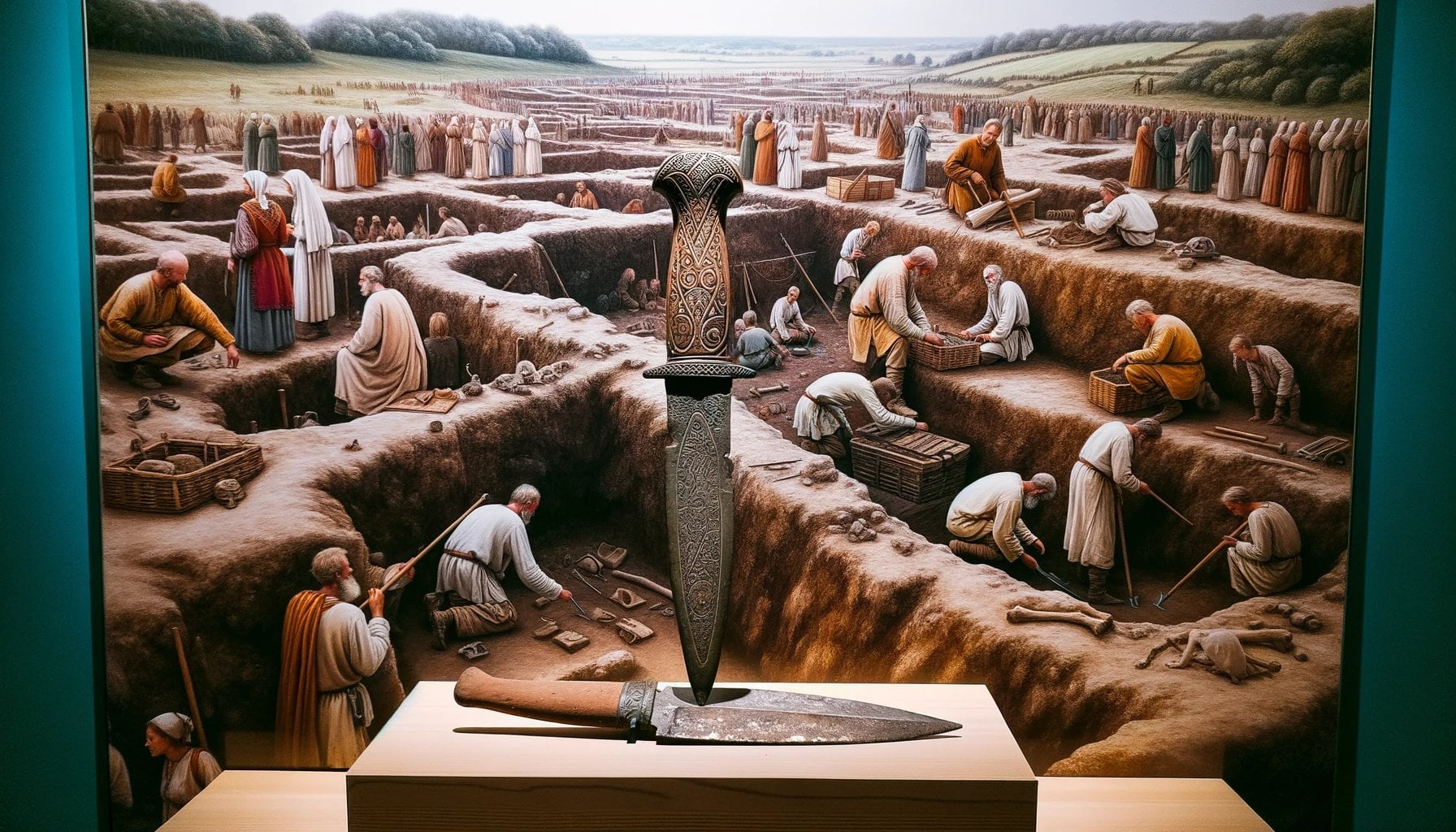
FAQ
Q1: Did Vikings use daggers as weapons?
A1: Yes, daggers were commonly used by Vikings as weapons. They served as secondary defense weapons in close combat and were particularly effective for delivering quick, deadly thrusts to an opponent’s vital organs.
Q2: What were Viking daggers made of?
A2: Viking daggers were typically made from iron, often using the cut-down iron from Viking swords or sax. They were crafted using the pattern welded method, which involved layering and forging multiple bars of iron together.
Q3: Did Vikings carry daggers on their person?
A3: Yes, Vikings carried daggers on their belts. They were an important part of a Viking warrior’s equipment and were considered a mark of their status and bravery.
Q4: What were the different types of Viking daggers?
A4: Viking daggers came in various designs. Some examples include the “parrying dagger,” a short and narrow blade used for defending against attacks, as well as the kidney dagger and the Baselard Dagger, which had distinct shapes and purposes.
Q5: Were daggers only used by Viking men?
A5: No, daggers were not limited to Viking men. Knives, including daggers, were allowed for all members of Viking society, including women and even slaves. They served as both weapons and everyday utility tools.
- Unlocking Francis Alexander Shields’ Finance Empire: A Comprehensive Biography - July 12, 2025
- Unveiling Francis Alexander Shields: A Business Legacy - July 12, 2025
- Francis Alexander Shields’ Business Career: A Comprehensive Overview - July 12, 2025
